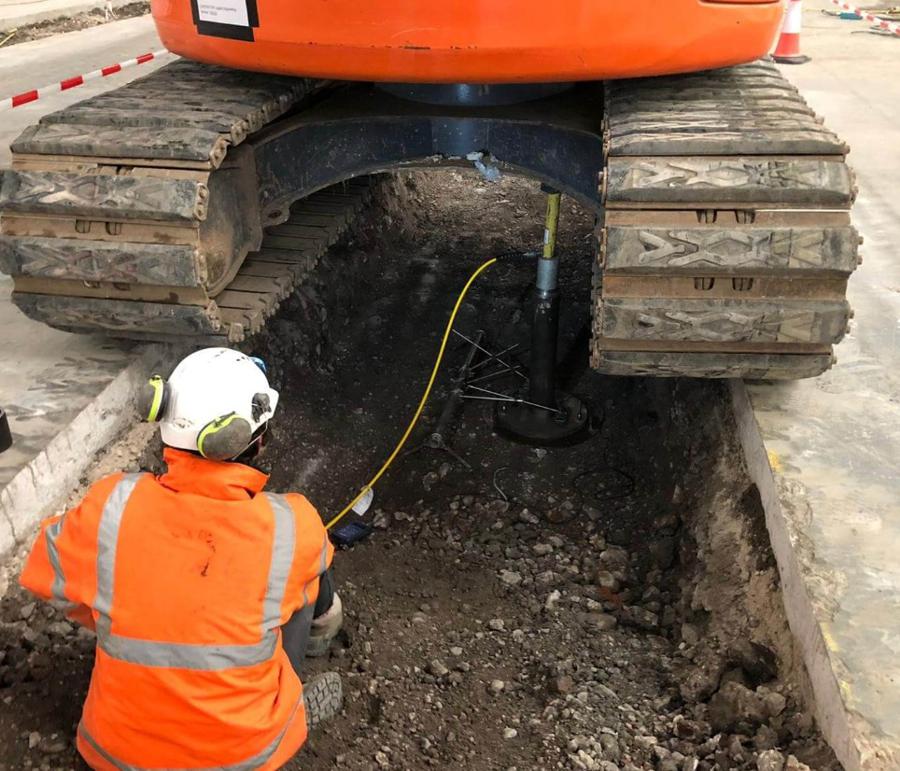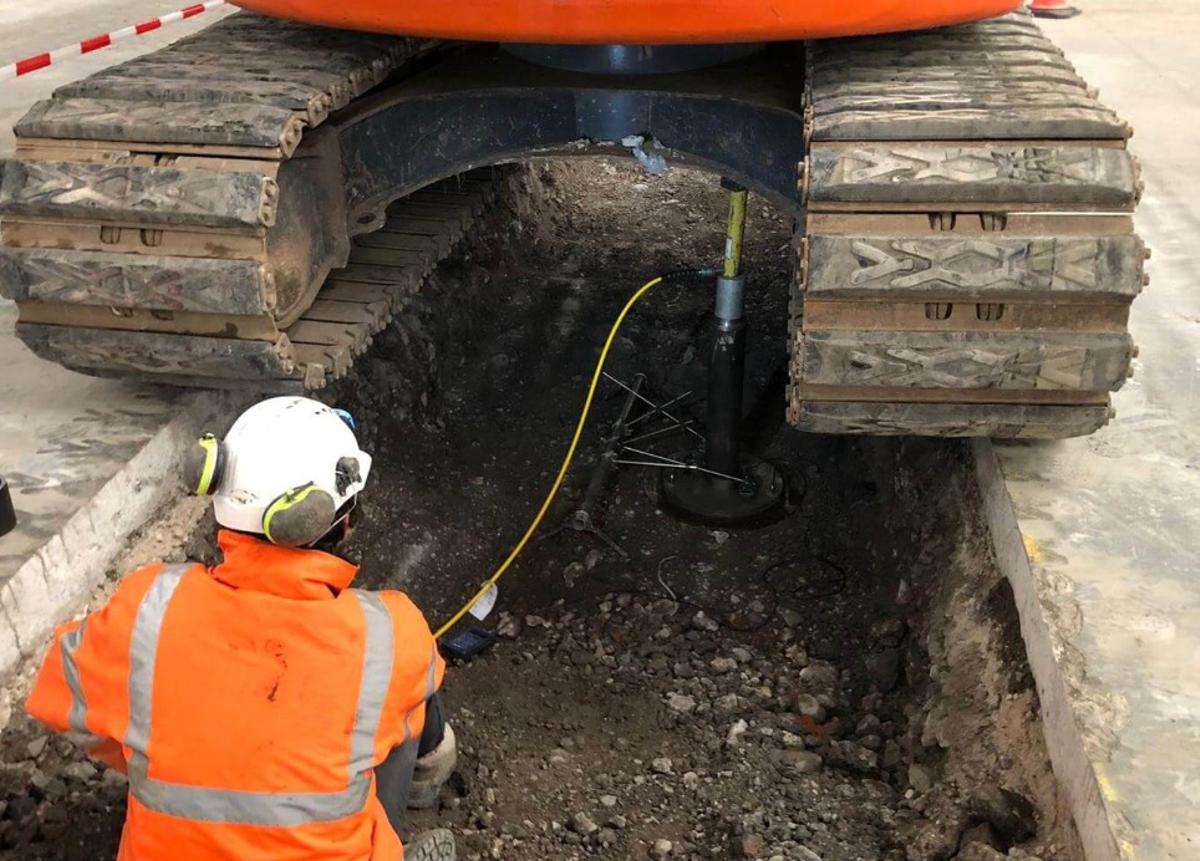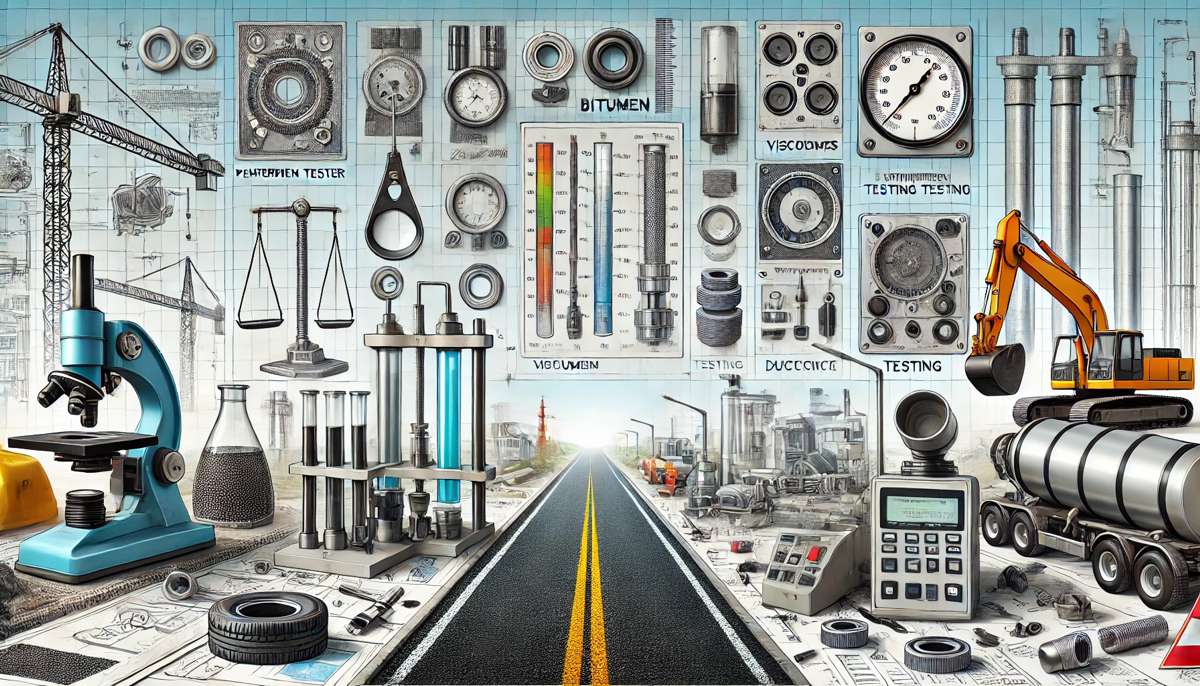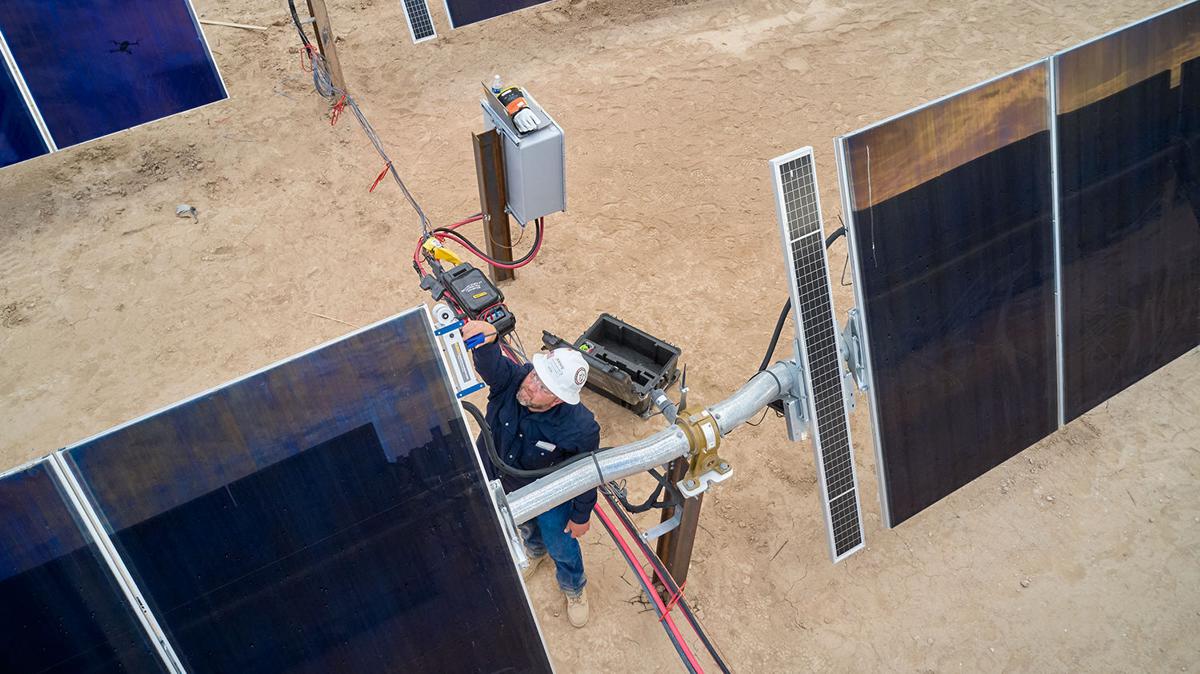Plate Bearing Test ensures Development Stability and Worker Safety
Whilst the majority of site investigations predominantly focus on the subsurface conditions of a proposed development site, the strength and structural stability of the first few meters of soil is equally as critical for the construction of various projects, especially when temporary structures – namely scaffolding or piling rigs – are required.
In the majority of these scenarios, the plate bearing test is employed to help determine the ground’s bearing capacity and composition by applying an increasing load on top of an in-situ steel plate, but is this just a waste of time?
In the grand scheme of things, plate bearing may seem like a relatively unimportant test. How often do you see scaffolding collapsing after all? If you’ve not calculated whether the ground conditions are suitable for your project, however, you are only setting yourself up for huge problems down the line.
This isn’t just irritating interruptions to the project at hand, mind; failure to carry out these tests puts workers’ health and safety at significant risk, but the potential issues extend far beyond this, and John Rodgman, Managing Director of the geotechnical drilling firm, Borehole Solutions, has shared his insight into the process in some more detail:
What is involved in a Plate Bearing Test?
“Typically carried out at the level of the foundation – either at the ground surface level or within a shallow pit – plate bearing tests involve loading a circular steel plate with incremental weights or ‘loads.’ As these are added, the steel plate is pressed further and further into the ground, until the point where no discernible movement can be recorded.
“Due to the size of the plate and the weights placed upon it, a counter-ballast will often be necessary per the British Standard 1377 1990: Part 9, with a minimum weight of 8 tonnes often deemed to be acceptable. Most companies tend to use a digger or excavator as the kentledge, but for significantly higher loading pressures, additional weight may be required.”
How do these tests work?
“To conduct a successful plate-bearing test, a test pit must first be excavated. In line with British Standards, the width of this pit should be around 4 to 5 times the diameter of the test plate being used; in most circumstances, test plates are between 300mm and 600mm wide. This pit and bearing apparatus should be left as undisturbed as possible, and protected from loose debris, embedded fragments, moisture changes, sunlight, and more – anything which may skew the results.
“A column is placed at the centre of the steel plate, and the load is then transferred to the column in five increments. This is observed, and readings are taken in intervals until the point where the average settlement rate reaches a figure of less than 0.02mm per interval. Should this be consistent, the pressure of the load is released and the area of land is allowed to recover.
“ After collecting all the necessary data, bearing capacity can then be calculated, showing you the maximum pressure or capacity that can be applied to the soil without failure.”
How do Bearing Tests Support Development Stability?
“Plate bearing tests help determine the soil bearing capacity of an area, as well as calculate the modulus of sub-grade reaction and indicate the presence of settlement. The results obtained through these investigations help to determine whether the area in question is strong enough to support the project’s development.
“Should this be the case, you can more effectively plan the site’s use, positioning heavy machinery in the areas where the ground best supports them.
“This is particularly useful when looking to build shallow foundations, as plate-bearing tests provide invaluable insights into the type of foundation which would best complement the area of land.”
Plate Bearing Tests and Worker Safety
“As the construction industry and its equipment continue to evolve and develop to complete projects quicker, more efficiently, and with a reduced environmental impact. To compensate for this, however, it is often the case that the size of construction equipment is increased, which of course, presents additional safety hazards to those operating the equipment, as well as those in close proximity.
“In particular, failure to conduct pre-testing prior to development has resulted in a number of instances where destabilised equipment has collapsed and overturned. One notable instance of this occurred in Manchester City Centre in 2018, where a 20-tonne cherry picker toppled through a busy pavement. Fortunately, no one was seriously harmed, but should this have occurred near a main road, the outcome of inadequate pre-testing could have been catastrophic.”
















